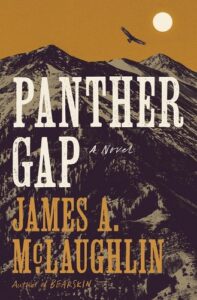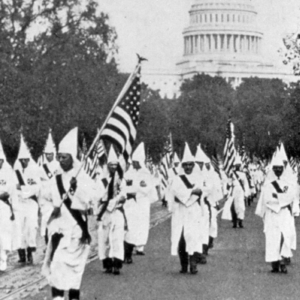I saw my first golden eagle at Hawk Mountain, Pennsylvania, when I was thirteen years old. A kind, indulgent uncle knew of my obsession with raptors, and he surprised me with a trip to Hawk Mountain. It was February. Cold. We drove north from the Shenandoah Valley through spitting snow flurries. I stared out the window of my uncle’s sedan and resisted mentioning that you don’t go to Hawk Mountain in February. The huge numbers of migrating raptors the mountain is famous for, well, that happens in the fall. And, to some extent, in the spring. Not in February. My uncle must not have known that.
But what my uncle did know was the sanctuary had a resident golden eagle. As I recall, she’d been wounded somehow, maybe she’d flown into a power line or something, and was recovering in a huge aviary. The place was deserted, but we parked in the lot and hiked up a short trail. We stood at the wire, snow blowing all around, and craned our necks to stare at the big eagle, perched on a padded wooden dowel suspended high in the aviary, black against the cold white sky.
I’d read about golden eagles, taped paintings and photos of them to my bedroom wall, dreamed of traveling out west to see them in the big-sky country of Wyoming or Montana. My uncle and I watched this one through binoculars, trading them back and forth.
Being a spoiled little punk who secretly harbored absurd, romantic notions about the universe and how I was going to make my way in it, I couldn’t help feeling disappointed that I was seeing my first golden eagle in a cage in Pennsylvania. I stood there with my vaguely embarrassing uncle, who’d started muttering about the wind and turning to look impatiently back down the trail to the car.
To be fair, I wore a warm coat, and my uncle did not. I told him I was fine, that I wanted to keep looking for a while longer. He shrugged and walked off, relieved and probably gratified to see I was engaged with the experience that must’ve seemed even to him to be a complete bust.
The eagle looked at me, looked away, looked at me again. She fluffed her feathers against the chill. This went on for a while.
Gradually, my unease and disappointment dissipated. I looked at the eagle, looked at the eagle looking back at me. She began to blaze with significance, otherness, presence. I felt a connection. I decided she recognized me as special among all the humans who’d come to gawk. I spoke to her. Time has mercifully erased from my memory exactly what I said. Probably I tried to express my sympathy, her being stuck in that cage and all. Maybe I promised she would be able to fly free as soon as she healed up. Maybe I invited her to make her way down to Virginia and visit. Hell I don’t know.
I was a weird kid.
*
Jump 20 years: In the nineties, I’m an aspiring fiction writer (weird kid, weird adult), reading Barry Lopez’s brilliant Of Wolves and Men, and on page 156 I’m stopped dead by his two paragraphs about Friedrich Remmler, a German outdoorsman-adventurer who, back in the 1930s, trained golden eagles to hunt wolves by flying them at children dressed in leather armor and wolfskins with pieces of raw meat tied to their backs.
Wait, what?
Eagles hunting wolves? And what about those kids? Even at the time, I knew this was the seed of a story.
I found a copy of Lopez’s source listed in his bibliography, an amazing article by Remmler himself, translated from the German and published in a falconry journal in 1970. The various anecdotes he reported sent me looking for more accounts of keeping golden eagles in captivity, for falconry or otherwise. Kent Durden’s 1972 bestseller Gifts of an Eagle was a delightful and informative read. Eagle Dreams by Stephen Bodio shed more light on the practice of hunting with eagles in Asia. Raising Susan by Bill Burns was fascinating, if weird. In 2006, Martin Hollinshead published his excellent book on Remmler’s eagle falconry, The Last Wolf Hawker. Hollinshead’s other works were also extremely useful, especially his earlier primer, Hawking with Golden Eagles.
I expect this happens a lot to fiction writers: you dive down a research rabbit hole, and when you come up you have all this great material, but the iron dictates of story prevent you from using much of it. I’m no expert on eagles or eagle falconry, so I can’t guarantee accuracy, but here are a few notes:
Eagles can live to 40 years old, especially in captivity. Some say 50.
Females can be twice the size of males and are naturally dominant. One theory I’ve seen for this big-girl sexual dimorphism—common to most raptors—is it allows a mated pair to exploit different prey populations, with the male specializing in small-to-mid-sized prey while the female tackles bigger animals, increasing the pair’s odds of feeding hungry chicks to independence.
While nomads of the northern steppes of Eurasia have hunted with golden eagles for thousands of years (Remmler got the idea from Kazakh eagle hunters he visited in the early 20th century), traditional western falconers have long harbored a powerful prejudice against eagles in part because eagles habitually prey upon other raptors. According to one expert, given a starting position of superior altitude, meaning the eagle can use gravity to its advantage, golden eagles can outfly anything alive. Having watched a pair of peregrine falcons fly their surreal rocket-powered courting aerobatics, I find this hard to believe, but there it is.
A big female golden only weighs maybe 15 pounds, but the power concentrated in her feet is hard to imagine, almost seeming to defy physics. She’ll cause mortal damage to larger prey by driving the long hind and front and inside talons into vital organs and compressing the lungs. The strategy is simple: hang on until the prey is dead.
A dog will work for the love and approval of a human companion; an eagle will only work for food. Which, judging from accounts by people who have lived with eagles, doesn’t mean the eagle isn’t fully capable of complex relationships with members of other species (humans, dogs, horses, etc.). It seems to be more of an eagle pride thing: I am eagle; no food, no work.
Unfortunately, in all my research, I never found any reports on the children who’d helped Remmler train his eagles to hunt wolves, no indication of whether the experience had any effect on them. But I have to imagine it did.
*
These days I see golden eagles fairly often in the mountains of Utah and Wyoming and, less frequently but more surprisingly, in the Virginia mountains of my boyhood, where it has been discovered that a fair number of them spend the winter after migrating from northeastern Canada. They hide out in higher elevations and feed on, among other things, road-killed whitetail deer. Last January I was driving to the post office in flat winter light when a big brown-black bird—clearly not a vulture—on a deer carcass in a friend’s field nearly made me run off the road. I stopped to watch, feeling no childish disappointment in the eagle’s choice of meal. You do what you need to do, I said. I still talk to them. It didn’t occur to me to ask if this might be the same eagle I’d met at Hawk Mountain, all those years ago.
Couldn’t be, could it?
***


















